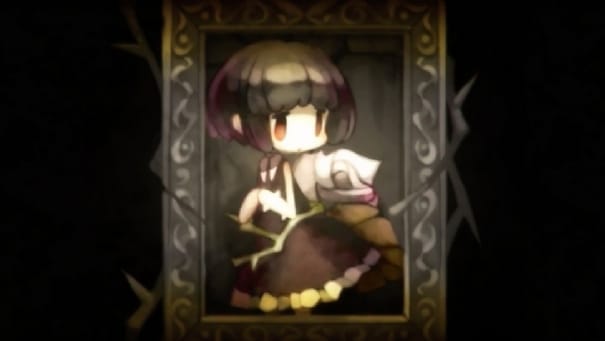A silence story
Evidently the son of the bizarre and fascinating artistic vision of Masayuki Furuya, already working on the imperfect The Firefly Diaries, A rose in the twilight can be considered, in some respects, the spiritual successor of the latter, although the two stories are not in no interconnected way and only some of the gaming dynamics are resumed.
What the two games have in common, and that the product in question reaches its maximum expression, is the ability to convey feelings and stories without a single word being spoken: some might argue that Nintendo has been successful for years, but one thing is about Peach’s abduction by Bowser, another is painting painful, mysterious events, of which Little Rose, the protagonist of the story, is initially as dark as the player.
The helpless protagonist wakes up in a decadent castle, alone, with a rose that shines from the body and the gift of immortality: the initial loss and despair leave room for a glimmer of hope when crossing a huge golem, which, in spite of the size and appearance, is protective and collaborative, and helps not to fall victim to the evil entities and the innumerable traps scattered around the castle
Furuya-san has done the homework, and you see that we are talking about a passionate video game even before a developer: with examples such as Ico and Yorda, and the “less is more” philosophy that has helped make the fortunes of products such as Journey, Limbo and Inside, the story of A rose in the twilight reveals itself very slowly, using more images than dialo
gues, more than the exhibition, questions rather than answers.
Along the way, often located in remote corners or in optional rooms, there are unlockable memories that reveal details that are not too subtle, and push for rewritability and exploration: although their achievement is not mandatory, and these often fall behind to some of the most diabolical puzzles of production, the advice is to collect as many as possible to fully understand the events behind the story of the little Rose.
The most obvious testimony of how the game succeeds in triggering empathy in the player comes from almost physical pain that is felt when the unlucky protagonist encounters death in the most violent ways: squashed, crushed by weight, decapitated, precipitated by excessive heights.
Every Rose’s death will sincerely disagree, because, as the story of video games (but not only) teaches, affection to a character unable to defend itself is much easier than doing it with a superhero / macho / invincible hero.
The soundtrack, the plot, character animations all contribute to creating an excellent degree of engagement and immediacy, further helped by a good pair of earbuds and, perhaps, darkness, as is often the case with Playstation Vita.
Arm between the thorns
At the heart of the NIS product gaming mechanics is the curse Rose has been victimized: not only guarantees immortality, allowing even extreme sacrifice when needed to advance, but allows it to absorb blood from an object and transfer it in another, so to activate levers, switches, and solve the puzzles the adventure is scattered about.
Any object remains crystallized in time when it is emptied of blood: self-propelled platforms remain suspended, some enemies become statues and the doors remain open, just to make some examples.

